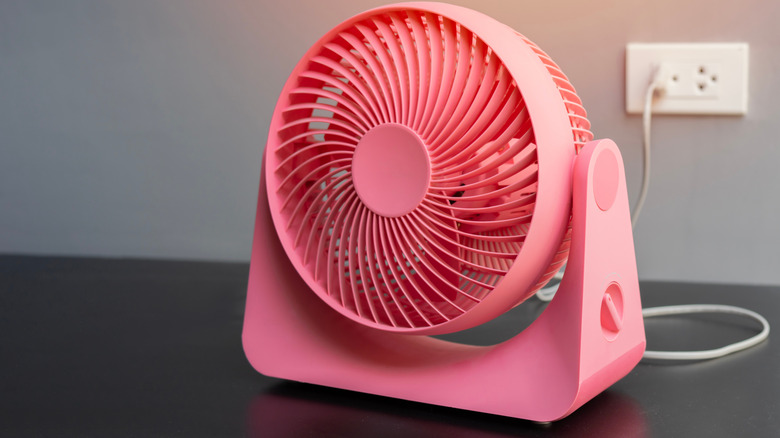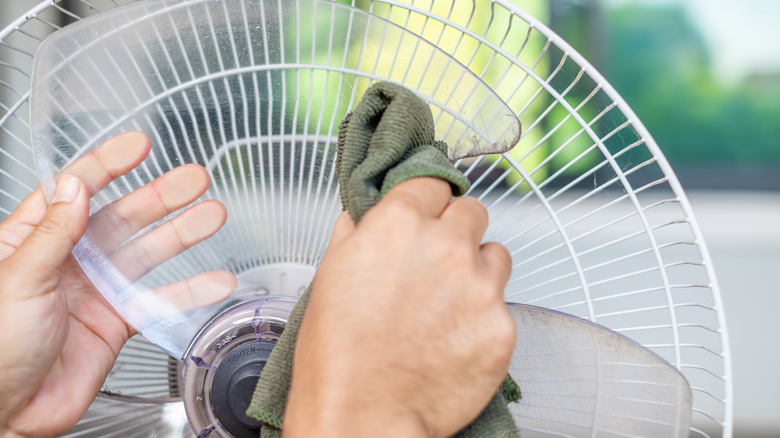Is This Viral Fan Cleaning Method Genius Or A Disaster Waiting To Happen?
Spotting dust on a fan is like watching birds fly... you've probably gotten used to it. Even with your best efforts to get rid of the dust in the air, it will somehow find its way to your ceiling or floor fan. And when searching online for creative or simple cleaning hacks to rid your fan of the dirt on it, it's common to come across interesting finds. A particular cleaning hack on social media has made its way toward viral status. It involves using soapy water, vinegar, and a plastic bag to remove the dust from your standing fans. But does this method actually work? And is it even safe, or is it a recipe for disaster? The answer is yes, the method does seem to remove dust. But should it be used? Probably not, as water and vinegar shouldn't be sprayed directly on electrical appliances.
This hack seems to utilize the intense rotation of the fan's blades and the dust-cleaning ability of the soapy water to expel the grime onto the plastic bag. And let's face it, the annoyance of having to constantly dust your fan can have you scrambling to find the most convenient hack out there. Not only is dust unsightly, but it can also trigger allergic reactions in humans and pets. Too much dust can even be hazardous to your health if it contains harmful chemicals, such as those commonly used during home construction. Therefore, having an effective dust removal process is important — but safety should always take center stage when it comes to cleaning.
The steps to this hack and why it's a bad idea
So here's how this dust removal hack goes. First, you take a spray bottle, fill it with a couple teaspoons of dishwashing liquid. Next, add about two cups of warm water and roughly half a cup of distilled vinegar, then shake. The next step is to place something on your table to protect it from the water. A flat piece of cardboard or a towel will probably do. Now, spray the solution on the front of the fan, dousing the blades about five to seven times. Then place a plastic trash or grocery bag that's big enough to cover the fan over it. Finally, run the fan on its highest setting for about 10 seconds, and most of the dust will be gone.
The issue with this hack is that you have to spray the fan directly with water. There's a reason why electrical devices often have colorful tags with words like "shock" or "hazard" written clearly on them. This is because they can become safety hazards when exposed to moisture. It can also cause them to short-circuit since the motor inside a fan contains various metal components and electrical wires that allow it to operate. Vinegar is also capable of corroding some metal components in electrical appliances, so it's not safe to spray it directly on them. Safer and equally effective ways to easily clean these fans include using a handheld vacuum cleaner or removing the front of the fan and wiping down the blades with a moist rag. You can also clean the hard-to-reach ceiling fans with this Dollar Tree microfiber duster.

